Planting trees on farmland has lots of benefits for a healthy eco-system. A healthy eco-system relies on a harmonious natural environment. This means a diversity of plants, insects and wildlife, healthy soil, and a good supply of clean water. Trees on agricultural land is not just beneficial for the eco-system, but there are wider reaching benefits too.
So, let’s delve into how this simple act of tree planting can help your farm or smallholding flourish in ways you might not have imagined.
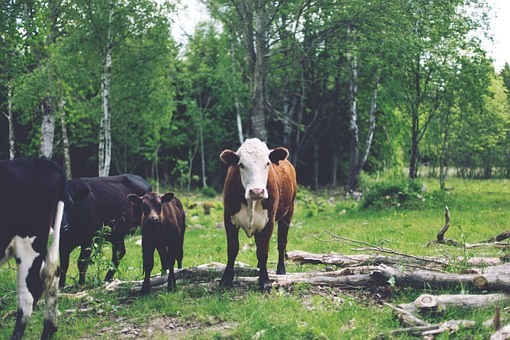
How Trees Provide Shelter for Livestock
When it comes to sheltering livestock, trees can provide a natural and effective solution. The canopy of trees can offer shade and protection against extreme weather conditions, such as excessive heat or heavy rain. This shelter helps to keep the animals comfortable, reduces their stress levels and promotes overall well-being.
Trees act as windbreaks, creating a barrier that shields livestock from gusts of wind. This is particularly important in open landscapes where wind can be harsh and detrimental to the health of animals. By strategically planting trees on your farm or smallholding, you can provide a safe and secure environment for your livestock, ensuring their welfare and increasing their productivity. Animals that have a good well-being are stronger and gain more weight. They are also more resistant to disease and are more likely to have successful outdoor births.
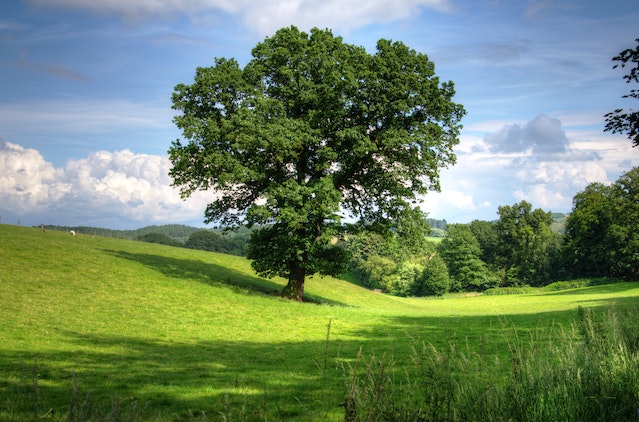
How Trees Provide Shelter for Crops
Planting trees can provide valuable shelter for crops, offering several benefits to their growth and overall productivity. Here’s how:
Wind protection: Trees acts as a natural windbreak for crops. They help reduce the impact of wind, which can break stems or uproot plants. By acting as a barrier, trees create a favourable microclimate around crops, reducing water loss and minimising wind stress.
Sun protection: Depending on their size and density, trees provide shade to crops during hot summer months. This shade helps to mitigate extreme heat and prevent sunburn on delicate plants. By regulating temperature and reducing sun exposure, trees foster optimal growth conditions and prevent heat damage.
Moisture regulation: Trees contribute to moisture regulation in agricultural landscapes. They reduce evaporation of water from the soil by providing shade and reducing wind speed. This can help preserve soil moisture, reducing the need for additional irrigation and enhancing water efficiency in crop production.
Pest control: Trees can play a role in natural pest control. They attract beneficial insects and birds that act as predators to crop-damaging pests. Biodiversity supported by trees can create a more balanced ecosystem, minimising the need for chemical pesticides and promoting a healthier and more resilient crop environment.
Soil improvement: The root systems of trees have a positive impact on soil health. As they grow, trees contribute to soil structure and fertility by promoting better nutrient absorption. They also improve water retention capacities. This benefits nearby crops, by providing them with access to essential resources for growth.
By strategically planting trees around your crops, you can harness their sheltering effects and create a more favourable agricultural environment. Incorporating trees into your farming practices can enhance crop quality, yield, and overall resilience.
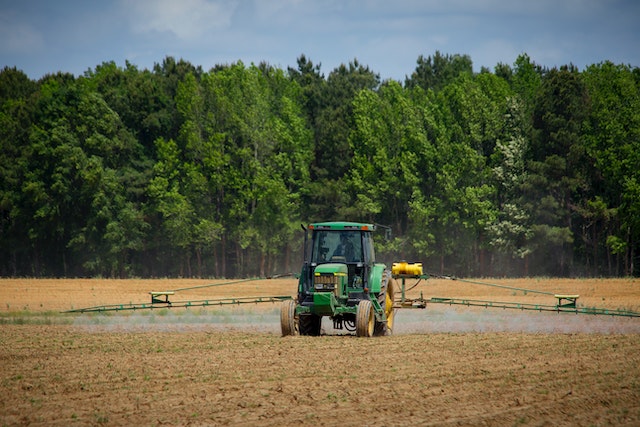
The Benefits of Trees for Soil
Planting trees offers numerous benefits to soil health and fertility. One of the primary benefits of trees is their ability to control soil erosion. The root systems of trees help bind the soil together, reducing the risk of erosion caused by wind and water. This helps to preserve topsoil, which is naturally rich in nutrients that are essential for plant growth.
Trees also play a crucial role in nutrient cycling. They absorb nutrients from deep within the soil through their roots and then release them back into the environment through leaf litter and decomposition. This process enriches the soil, making it more fertile and providing essential nutrients for other plants in the ecosystem.
As trees shed leaves, twigs, and branches, they contribute to the organic matter content of the soil. Organic matter improves soil structure, water-holding capacity, and nutrient availability. It also serves as a food source for beneficial soil organisms, enhancing microbial activity that supports healthy soil ecosystems.
Trees create a diverse and complex habitat within the soil. Their root structure supports a wide array of beneficial soil organisms, such as bacteria, fungi, earthworms, and mycorrhizal fungi. These organisms contribute to nutrient cycling, decomposition, and overall soil health.
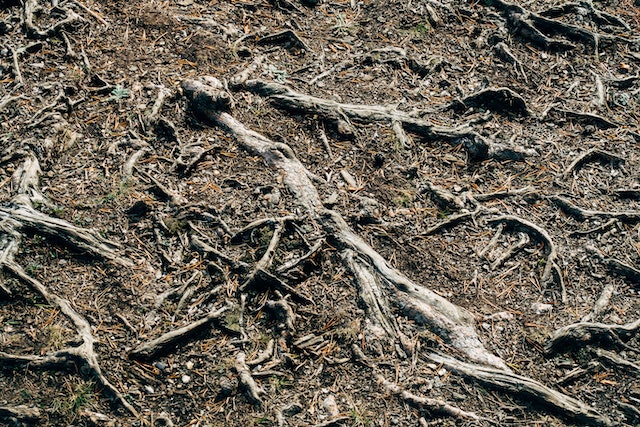
How Planting Trees Benefits Stream and Rivers
Planting trees on farmland has significant benefits for streams and rivers, playing a vital role in protecting and improving the health of water ecosystems.
Tree root systems help stabilise stream banks, preventing erosion caused by flowing water. Their root networks hold the soil in place, reducing sediment runoff into streams and rivers. This helps maintain the integrity of water channels and prevents excess sediment deposition that could harm aquatic habitats. Trees also act as natural buffers, slowing down the flow of water during heavy rain events and absorbing excess water, thereby reducing flood risks downstream.
Trees provide shade that helps regulate water temperature in streams and rivers. This is often critical for sensitive aquatic species that require cooler water temperatures to thrive.
Tree canopies and root systems act as natural filters, reducing the amount of sediment, nutrients, and pollutants entering streams and rivers. Trees help to intercept surface runoff, capturing any fertilisers, pesticides, and other contaminants before they reach the water. This filtration process helps maintain water quality, preserving the health of aquatic ecosystems and benefiting both wildlife and downstream users.
Planting trees along the banks of streams and rivers creates a riparian zone—a transitional area between land and water. Riparian zones offer diverse habitats that support a wide range of plant and animal species. They provide nesting sites, food sources, and shelter for wildlife, contributing to biodiversity and ecosystem resilience.
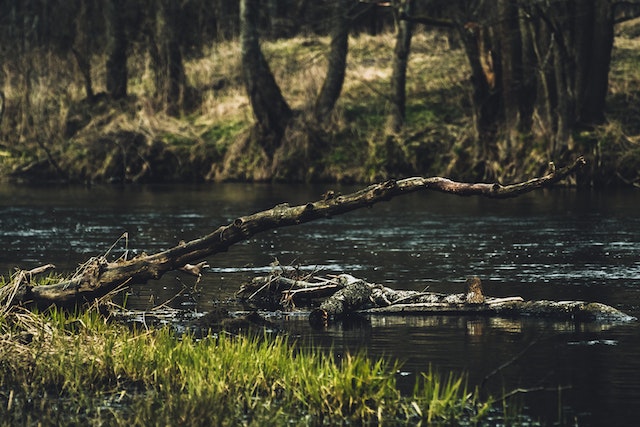
Trees Provide Habitats for wildlife
Trees provide excellent shelter and nesting sites for various species of wildlife. They offer protection from predators, extreme weather conditions, and serve as safe breeding grounds.
Trees can attract a wide range of insects, fruits, nuts, and seeds, which provide a valuable food source for many wildlife species. From birds to small mammals, these resources enhance their survival and reproduction.
Planting trees on farmland promotes biodiversity by diversifying the available habitats. This can support a wide variety of flora and fauna, from birds and butterflies to insects and small mammals. By supporting biodiversity and improving ecological functions, trees enhance the health of ecosystems and contribute to sustainable land management practices.

Trees Provide a Sustainable Source of Wood
Planting trees on farmland can offer an additional source of income through sustainable timber or firewood production.
By selecting suitable tree species and adopting sustainable forestry practices, you can cultivate trees for timber production. As these trees grow, they can be harvested and sold as high-quality timber for various purposes, such as construction, furniture, or crafts. This can provide a long-term and profitable income stream.
Planting trees specifically for firewood can be a sustainable alternative for heating and cooking purposes. As the trees mature, they can be selectively harvested for firewood, providing a renewable energy source for local communities. This not only generates an income, but it also reduces reliance on non-renewable energy resources. Here’s more on the benefits of owning your own woodland.
Planting trees on farmland opens up opportunities for producing value-added products. For instance, you could explore making wood chips, mulch, or charcoal from the harvested trees. These could then be sold for various purposes like landscaping, gardening, or cooking, increasing profitability and diversifying your income streams.
It is important to note that successful timber or firewood production requires proper planning, long-term management, and knowledge of sustainable forestry practices.
What Trees should I Plant on a Farm or Smallholding?

There are lots of different species of tree that are suitable for planting on farms. Native trees that are common in the area are more likely to thrive.
If you want trees to plant for a shelterbelt, Alder, Poplar and Willow are fast growing and can be trimmed to control height. Alder and Willow are also good trees to plant for wetter areas. They also provide habitat and food for wildlife.
The Forestry Commission may also offer grants for tree planting, so long as their criteria is met. See their website for more details.
Planting trees on farmland is something that is increasing in importance. If you are a farmer or smallholder, please share how you use the trees on your land.
